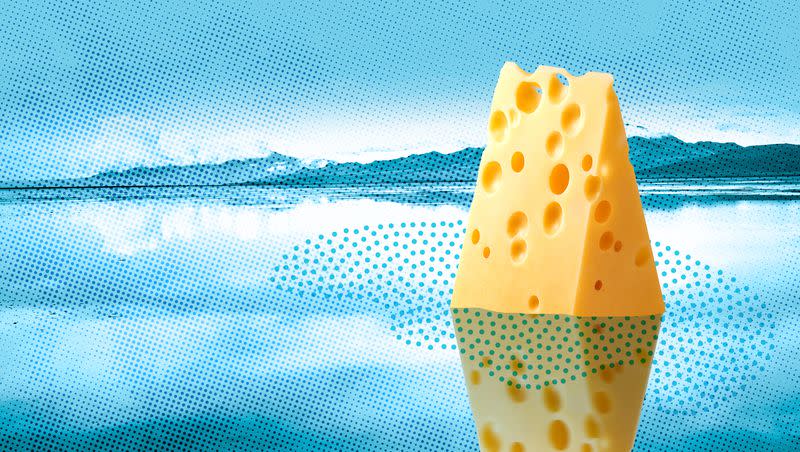Experts speak on moldy cheese: Is it safe to eat?

When it comes to making cheese, mold is a necessity for some.
Mold plays a crucial part in the cheesemaking process. But it’s tricky for the common cheese consumer to decipher when the mold is safe enough to eat.
So where’s that fine line? And how can consumers know when cheese is safe to enjoy — before it’s too late?
Why does cheese have mold?
Jamie Png, an American Cheese Society cheese industry professional, told HuffPost that all forms of cheese are “ripened through the actions of various microbes, both invisible and visible, including molds, fungi, yeasts and more.”
Cheeses such as Roquefort, Camembert and Humboldt Fog require the use of mold to develop their unique flavors.
Healthline shared that while molds are dangerous to eat in most other foods, some types are used in cheesemaking to expand flavor and texture — which are initially safe to eat.
The blue lines on gorgonzola or a brie wheel’s white rind are examples of this, which doesn’t alter too much from the initial production.
“The growth should be uniform, the same color and incorporated into the cheese,” warned Trevor Craig, a food safety expert at Microbac Laboratories, per HuffPost.
However, according to HuffPost, if cheese appears to have unwanted mold on the outside edges and/or shows “a different color and texture” likely to be “sporing and fuzzy,” then that may be a cause for concern.
How can I tell if cheese needs to be thrown out?
Cheese generally shouldn’t change in appearance once it’s purchased from the store and placed in your fridge, but there are signs there’s harmful mold on soft and hard cheese, reported HuffPost.
In terms of soft cheese such as cottage cheese and ricotta, any mold found warrants the immediate disposal of it, according to Mayo Clinic.
For firmer and semisoft cheeses like cheddar or Parmesan, Craig advised to cut off the mold — plus an inch around — to possibly salvage it, per HuffPost.
Even so, avoid cutting straight in the mold, as it may risk spreading to other sections.
If you’re unsure about the mold on cheese, Mayo Clinic recommends to simply toss it out for safe measure.
Harmful effects of bad mold on cheese
According to Healthline, if consumed, molds — which can carry E. coli, Salmonella and Brucella — can cause common food poisoning issues such as stomach pain, diarrhea and vomiting, and they can potentially lead to death.
In addition, hazardous molds can produce mycotoxins, the effects of which can be as extreme as developing cancer, reported Healthline.
How should I store cheese?
The USDA stated that soft cheeses can be refrigerated for a week, while firm cheese can be refrigerated six months prior to opening, and around three to four weeks after opening.
Related
Png shared to HuffPost to place cheese in the crisper section of your fridge and cover it in wax paper or cheese paper. This process, according to Png, helps to keep moisture away from cheese as opposed to using a plastic wrap/container, which can both trap moisture and potentially result in mold growth.
Mark Johnson, assistant director at the Center for Dairy Research, shared that a zip-top plastic bag additionally could work, but it’s preferred to vacuum-seal it, per HuffPost.
Regarding temperature, Healthline advises to keep cheese between 34 and 38 degrees Fahrenheit.
On top of this, it’s suggested by Png to check your cheeses often, specifically every few days.

